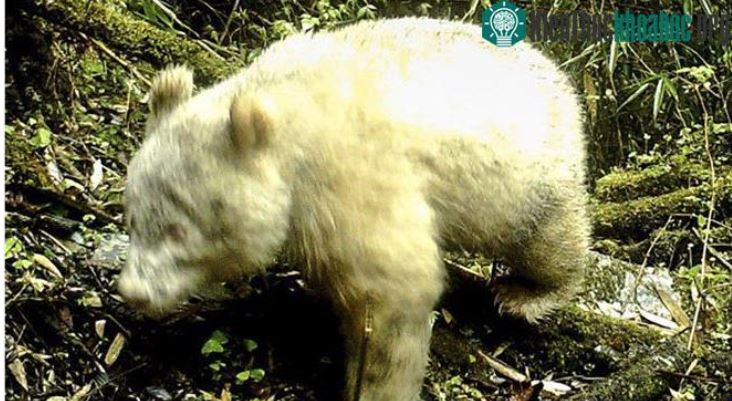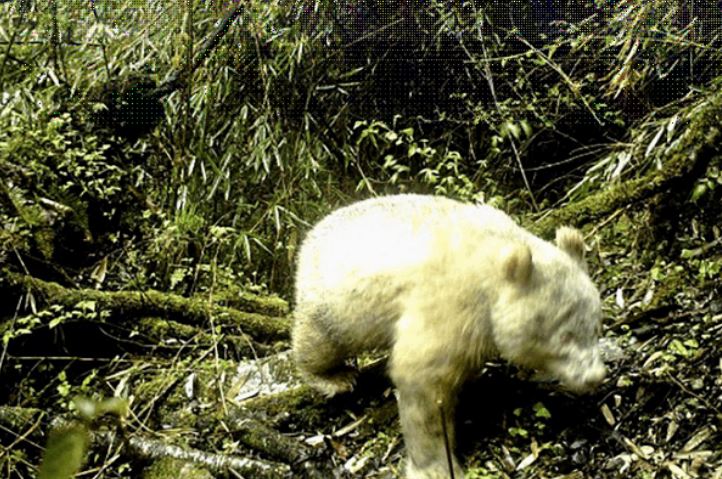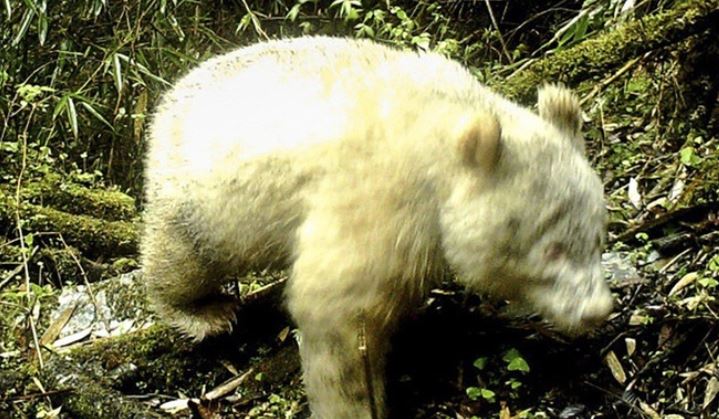Immediately, relevant units planned to protect and conduct some research to learn more about this unique 1-0-2 type of panda.

Albino panda detection has 1-0-2 in the world
"Recently, authorities in Sichuan province, China announced that once again the region has captured images of the world's only a pa albino panda as it walked across a snowy field.
The panda took about 10 minutes to reach the foot of the mountain before disappearing. During this rare appearance, the fur on all four of its legs had turned yellowish."

It is noted that this white-bear panda was first discovered in 2019 in the Ngawalung Nature Reserve (southwest of Sichuan province, China), and it had all the characteristics of a typical albino panda with white fur, red eyes, and long claws. Researchers believe that the animal was living alone and had left its family.
Tan Yingchun, a staff member of the conservation project and researcher on the white-bear panda, stated that the panda is now much larger and has a more robust build.
The recent images show that the panda is about 3 years old, and the white fur on its legs has turned yellow.
Many studies on rare bear species
The researcher and also bear expert Li Sheng (China) explained that the mutated albino gene can inhibit melanin synthesis in animals, causing their fur to be white, light yellow, or yellowish-white.

Accordingly, albinism typically does not adversely affect the physical structure of the animal's body. However, it often makes them sensitive to direct sunlight, and owning white fur also makes them easily detected.
Li Sheng, a researcher, and expert on bears in China, also expressed joy at seeing this unique giant panda grow up healthy and safe, looking plump and adapting well to its environment.
The bear may have moved away from its birthplace to find a new and better habitat, which is common in female pandas. Therefore, this may be a wild female panda that has left its mother," Li said.
Currently, the conservation area is planning to expand its monitoring range and apply advanced DNA testing technology to search for more clues to better understand the distribution of the albino gene mutation in the local panda population.
Until now, scientists have been continuously searching and studying more deeply the issue of genetic mutations in pandas to enhance human understanding of this ancient bear species.






